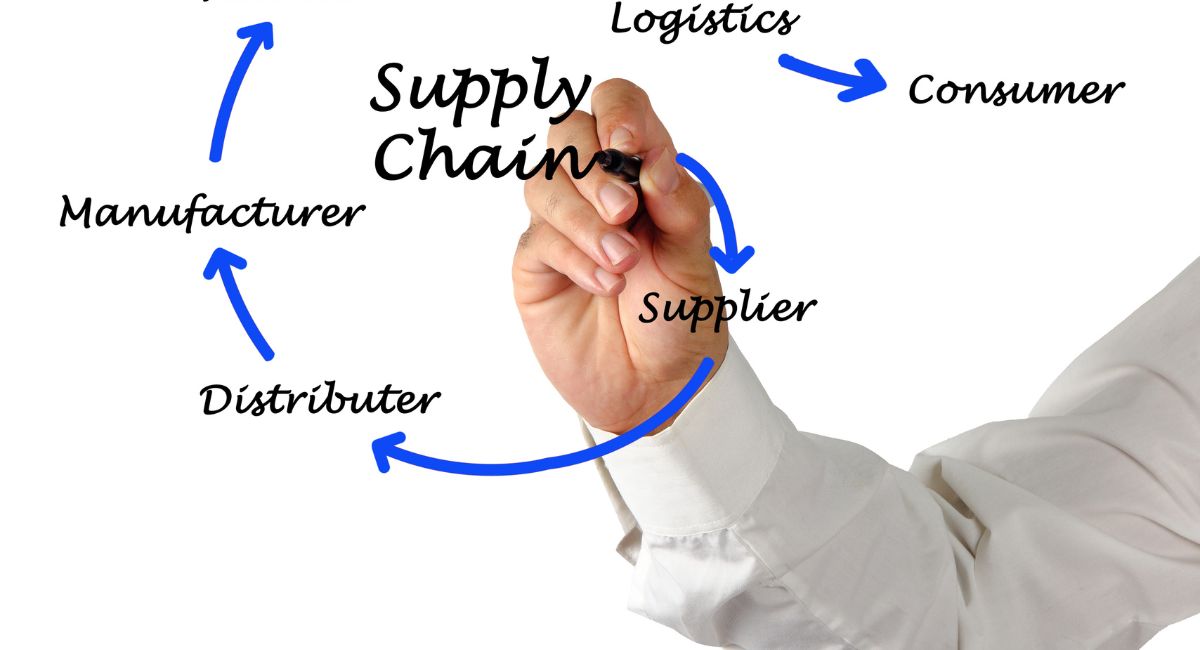Top 10 Ways Supply Chain Management Is Revolutionized By The World Of Web3
Supply chains, the intricate webs that deliver products from raw materials to consumers, are facing unprecedented challenges. Globalization, complex sourcing networks, and rising consumer demands for transparency and sustainability have exposed vulnerabilities in traditional systems. Web3, the next iteration of the internet built on decentralization and blockchain technology, offers a potential solution to these issues, promising a more efficient, secure, and transparent future for supply chain management.
Web3: A Paradigm Shift
Web3 stands in stark contrast to the current Web 2.0, dominated by centralized platforms controlling user data and interactions. Here’s how Web3 redefines the landscape:
- Decentralization: Power shifts from centralized entities to distributed networks. Data is not stored on a single server but across a network of computers, making it tamper-proof and censorship-resistant.
- Blockchain Technology: The core of Web3, blockchains are immutable ledgers that record transactions chronologically and securely. Each participant in a supply chain can access and verify data, fostering trust and transparency.
- Smart Contracts: Self-executing contracts written in code automate specific actions when predefined conditions are met. This streamlines processes and eliminates the need for intermediaries.
- Tokenization: Assets, both physical and digital, can be represented as tokens on a blockchain. This enables fractional ownership, secure trading, and efficient tracking.
Also, read- Blockchain Possibilities for Supply Chain Management
Web3’s Impact on Supply Chain Management
By leveraging these core principles, Web3 can revolutionize various aspects of supply chain management:
-
Enhanced Traceability and Transparency: Every step a product takes, from harvest to delivery, can be recorded on a blockchain. Consumers can access this information, ensuring ethical sourcing, sustainable practices, and product authenticity. This empowers them to make informed purchasing decisions.
-
Improved Efficiency and Automation: Smart contracts can automate manual tasks like purchase orders, payments, and customs clearance. This reduces paperwork, minimizes human error, and expedites processes, leading to faster delivery times and reduced costs.
-
Streamlined Logistics and Inventory Management: Real-time tracking of goods through the supply chain allows for better inventory management and resource allocation. Sensors and Internet of Things (IoT) devices can be integrated with blockchain to provide continuous data on location, temperature, and other critical factors, optimizing logistics and minimizing spoilage.
-
Reduced Counterfeiting and Fraud: Blockchain’s immutability makes it nearly impossible to alter data. This deters counterfeiting and fraud, protecting brands and consumers. Additionally, tokenization allows for secure and transparent trade finance, mitigating financial risks associated with international trade.
-
Building Sustainability: Consumers are increasingly interested in the environmental and social impact of the products they buy. Web3 allows for tracking a product’s journey, ensuring ethical sourcing of raw materials and sustainable practices throughout the supply chain. This promotes responsible consumerism and incentivizes businesses to adopt sustainable practices.
Web3: Revolutionizing the World of Supply Chain Management
Web3, the next evolutionary phase of the internet, is poised to revolutionize various industries, and supply chain management is no exception. Here are the top 10 ways the world of supply chain management is being transformed by Web3:
- Transparency and Traceability: Web3 technologies such as blockchain enable immutable and transparent record-keeping. Every transaction and movement within the supply chain can be recorded on a decentralized ledger, providing stakeholders with unprecedented visibility into the flow of goods from the source to the consumer. This transparency enhances trust and accountability while combating issues like counterfeiting and unethical practices.
- Decentralization of Authority: Traditional supply chains are often centralized, with power concentrated in the hands of a few dominant players. Web3 introduces decentralized autonomous organizations (DAOs) and smart contracts, enabling the automation of processes and decision-making within the supply chain. This decentralization reduces reliance on intermediaries and fosters collaboration among diverse stakeholders.
- Smart Contracts for Automation: Smart contracts, self-executing agreements with the terms of the contract directly written into code, streamline and automate various supply chain processes. These contracts automatically trigger actions such as payment release, inventory replenishment, and delivery confirmation once predefined conditions are met, reducing delays and human error.
- Immutable Product Authentication: Counterfeiting is a significant challenge in supply chains across industries. Web3 solutions leverage technologies like non-fungible tokens (NFTs) and cryptographic signatures to create unique digital identities for products. Consumers can verify the authenticity and origin of goods by scanning these digital signatures, ensuring they receive genuine products.
- Supply Chain Financing: Web3 facilitates innovative financing models within supply chains through decentralized finance (DeFi) platforms. By tokenizing assets such as inventory and receivables, businesses can access liquidity without traditional financial intermediaries. This democratization of finance enables smaller suppliers to access capital more easily, fostering inclusivity and resilience in the supply chain ecosystem.
- Predictive Analytics and AI: Web3 enables the aggregation of data from various sources across the supply chain, creating a comprehensive dataset for analysis. Advanced analytics powered by artificial intelligence (AI) algorithms can identify patterns, predict demand fluctuations, optimize inventory levels, and mitigate risks such as disruptions or delays. This data-driven approach enhances efficiency and agility in supply chain management.
- Sustainability and Ethical Sourcing: With growing consumer demand for sustainable and ethically sourced products, supply chains are under pressure to demonstrate transparency and accountability. Web3 technologies facilitate the tracking of environmental and social impact metrics throughout the supply chain, enabling companies to validate claims of sustainability and responsible sourcing. Decentralized platforms also empower stakeholders to collaborate on initiatives for environmental conservation and fair labor practices.
- Interoperability and Integration: Traditional supply chains management often suffer from siloed systems and fragmented data, hindering seamless coordination and communication among stakeholders. Web3 promotes interoperability through open protocols and standards, allowing different platforms and technologies to interact seamlessly. Integration across disparate systems enables real-time data sharing, synchronization of processes, and end-to-end visibility, optimizing the flow of goods and information.
- Dynamic Supply Chain Orchestration: Web3 enables dynamic supply chain orchestration, where resources and capacities are allocated in real-time based on changing demand patterns and market conditions. Smart contracts and decentralized decision-making algorithms can automatically adjust production schedules, logistics routes, and inventory levels to optimize efficiency, minimize costs, and meet customer expectations.
- Tokenized Incentive Mechanisms: Web3 introduces tokenization as a means of incentivizing desirable behaviors and aligning incentives across supply chain participants. By issuing tokens that represent ownership, voting rights, or rewards, companies can incentivize suppliers to meet quality standards, adhere to sustainability practices, or collaborate on innovation initiatives. These tokenized incentive mechanisms foster a culture of cooperation and continuous improvement within the supply chain ecosystem.
In summary, Web3 technologies are fundamentally transforming supply chain management by enhancing transparency, decentralizing authority, automating processes, enabling sustainable practices, and fostering collaboration among stakeholders. Embracing these innovations can lead to more resilient, efficient, and responsible supply chains capable of meeting the challenges of a rapidly evolving global economy.
Huge tech companies like IBM have already seen the potential for blockchain supply chain management and have web 3.0 solutions in development or pilot program stages. #AfricaBlockchainUG19 #Africa4IR pic.twitter.com/IptTGIQwmz
— MrHashtag🇺🇬 (@paulwebs1) July 2, 2019
Challenges and Considerations
Web3 presents a compelling vision for the future of supply chain management, but significant hurdles need to be addressed before widespread adoption becomes a reality. Here’s a deeper dive into the key challenges and considerations that need to be navigated:
1. Scalability:
-
Blockchain Bottlenecks: Current blockchain platforms, particularly Proof-of-Work (PoW) based systems like Bitcoin, struggle to handle the massive data volumes generated by complex global supply chains. Each transaction needs to be validated by the entire network, leading to slow processing times and high transaction fees. This becomes a significant barrier for real-world implementation in fast-paced supply chains.
-
Scalability Solutions: Developers are actively working on scalability solutions. Promising approaches include:
- Proof-of-Stake (PoS): This consensus mechanism consumes less energy and offers faster transaction speeds compared to PoW.
- Sharding: Dividing the blockchain into smaller shards allows for parallel processing, increasing scalability.
- Layer-2 Solutions: These build on top of existing blockchains to handle transactions off-chain, reducing the load on the main chain and improving scalability.
2. Regulation and Standards:
-
Evolving Regulatory Landscape: Blockchain and Web3 technologies are still in their early stages. Regulatory frameworks are only just beginning to be developed, and there’s a lack of clarity on issues like data ownership, privacy, and security standards within the context of supply chains. This uncertainty discourages businesses from adopting Web3 solutions due to potential legal and compliance risks.
-
Standardization Hurdles: Currently, there exists a multitude of blockchain platforms, each with its own protocols and standards. This lack of interoperability creates fragmentation, hindering seamless information exchange across different parts of the supply chain. Establishing industry-wide standards for data formats and communication protocols is crucial for smooth integration and widespread adoption.
3. Integration and Adoption:
-
Legacy System Integration: Integrating Web3 solutions with existing legacy enterprise resource planning (ERP) systems used in supply chains can be a complex and expensive undertaking. These systems often lack the infrastructure to interact with blockchain networks, requiring significant investments in upgrades and development.
-
User Adoption and Awareness: Widespread adoption requires buy-in from all stakeholders within the supply chain ecosystem. This includes not just large corporations but also small and medium-sized enterprises (SMEs) that may lack the resources or technical expertise to integrate Web3 technologies. Educating all participants about the benefits and functionalities of Web3 solutions is crucial for driving adoption.
4. Security Concerns:
-
Smart Contract Vulnerabilities: Smart contracts, a cornerstone of Web3, are essentially pieces of code that automate tasks on the blockchain. However, bugs or vulnerabilities in these contracts can be exploited by malicious actors, potentially leading to financial losses or manipulation of data within the supply chain. Rigorous code audits and secure coding practices are essential to mitigate these risks.
-
Decentralized Security: While decentralization offers many advantages, it also presents security challenges. Unlike centralized systems with a single point of control, blockchain networks are inherently more vulnerable to distributed denial-of-service (DDoS) attacks that can disrupt operations. Implementing robust security measures throughout the blockchain infrastructure is crucial for ensuring the integrity and reliability of supply chain data.
5. User Interface and User Experience (UI/UX):
-
Complexity for Non-Technical Users: Currently, many Web3 platforms have user interfaces that are complex and not user-friendly for those unfamiliar with blockchain technology. This can be a barrier to entry for many stakeholders within the supply chain, especially smaller businesses or less tech-savvy users. Developing intuitive and user-centric interfaces is essential for broader adoption.
-
Standardization of User Experience: Lack of consistency in user experience across different Web3 platforms can be confusing for users navigating the supply chain ecosystem. Standardizing UI elements and functionalities will enhance ease of use and encourage wider participation.
The Road Ahead
Despite the challenges, the potential benefits of Web3 for supply chain management are undeniable. Leading companies across industries are already exploring and implementing Web3 solutions. As the technology matures, scalability issues are addressed, and regulations are established, we can expect a significant shift towards a more decentralized, transparent, and efficient supply chain management ecosystem.
Beyond Efficiency: A Collaborative Future
Web3’s impact extends beyond just improving efficiency. It fosters collaboration and empowers all stakeholders within the supply chain.
- Incentivizing Sustainable Practices: Blockchain-based tokenization can create incentive structures that reward sustainable practices. Farmers who can demonstrate eco-friendly practices can receive premium tokens, encouraging responsible production.
- Empowering Consumers: Consumers can gain greater control over the products they purchase. By accessing detailed product information on the blockchain, they can make informed choices aligned with their values.
- Building Trust and Transparency: Web3 fosters trust between all participants in the supply chain management. The immutability and transparency of blockchain create a level playing field, reducing disputes and fostering collaboration.
Conclusion
In conclusion, the integration of Web3 technologies into supply chain management represents a paradigm shift towards a more transparent, efficient, and sustainable future. By leveraging blockchain, smart contracts, decentralized finance, AI, and tokenization, businesses can overcome traditional challenges such as lack of transparency, centralized control, and inefficiencies. Embracing these innovations enables stakeholders to collaborate seamlessly, optimize processes dynamically, and respond effectively to evolving market demands while upholding ethical and sustainable practices. As we continue to harness the potential of Web3, the supply chain landscape will evolve into a resilient, interconnected ecosystem capable of meeting the needs of both businesses and society at large.
Stay informed with daily updates from Blockchain Magazine on Google News. Click here to follow us and mark as favorite: [Blockchain Magazine on Google News].
Get Blockchain Insights In Inbox
Stay ahead of the curve with expert analysis and market updates.
latest from tech
Disclaimer: Any post shared by a third-party agency are sponsored and Blockchain Magazine has no views on any such posts. The views and opinions expressed in this post are those of the clients and do not necessarily reflect the official policy or position of Blockchain Magazine. The information provided in this post is for informational purposes only and should not be considered as financial, investment, or professional advice. Blockchain Magazine does not endorse or promote any specific products, services, or companies mentioned in this posts. Readers are encouraged to conduct their own research and consult with a qualified professional before making any financial decisions. The featured image used is just a creative depiction of the title and it does not intend to hurt sentiments of any person or institution. If it hurts anyone sentiments, please do not hesitate to reach out to Blockchain Magazine.

 Bitcoin
Bitcoin  Ethereum
Ethereum  XRP
XRP  Tether
Tether  Solana
Solana  USDC
USDC  Dogecoin
Dogecoin  Cardano
Cardano  Lido Staked Ether
Lido Staked Ether  TRON
TRON  Wrapped Bitcoin
Wrapped Bitcoin  Chainlink
Chainlink  Wrapped stETH
Wrapped stETH  Sui
Sui  Avalanche
Avalanche  Stellar
Stellar  Shiba Inu
Shiba Inu  Hedera
Hedera  Toncoin
Toncoin  LEO Token
LEO Token  Hyperliquid
Hyperliquid  Bitget Token
Bitget Token  Litecoin
Litecoin  WETH
WETH  USDS
USDS  Polkadot
Polkadot  Bitcoin Cash
Bitcoin Cash  Ethena USDe
Ethena USDe  Wrapped eETH
Wrapped eETH  MANTRA
MANTRA  Uniswap
Uniswap  Ondo
Ondo  Pepe
Pepe  Aave
Aave  Monero
Monero  NEAR Protocol
NEAR Protocol  WhiteBIT Coin
WhiteBIT Coin  Mantle
Mantle  Official Trump
Official Trump  Aptos
Aptos  Dai
Dai  Internet Computer
Internet Computer  Ethereum Classic
Ethereum Classic  Bittensor
Bittensor  Cronos
Cronos  OKB
OKB  POL (ex-MATIC)
POL (ex-MATIC)  Gate
Gate 




